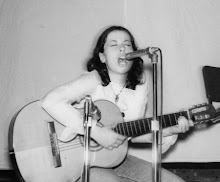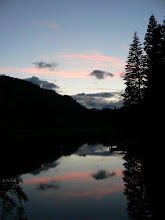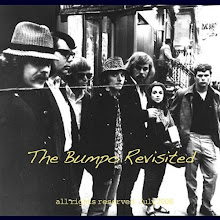I wrote about Fannie Quigley and her wild rhubarb pies last July 4, in memory of an earlier Fourth spent baking pies for a celebration at Kantishna. I made a short Alaska pilgrimage this August, photographing her final home and that well-worn rusty cookstove.
Frances Sedlacek was born in 1870 on a homestead into a Bohemian family in Nebraska. Her father remarried after her mother died when she was six. Those farming years in Nebraska were marked by locusts, low crop prices, and Arctic-style blizzards.
Fannie left home at an early age, learning English as she followed the railroads west, then heading north at age 27 to the Klondike. Lugging a portable Yukon cookstove, groceries and a tent, she prided herself on arriving at new gold strikes to sell meals to the prospectors.
Her nickname, "Fannie the Hike," was purportedly from the distances her diminutive legs could cover while toting her portable kitchen, although some said it also came from her stint as a dance hall girl.
Clutching her free miner's certificate, Fannie staked a claim in 1900 on a tributary of the Stewart River, 125 miles from Dawson. She married miner Angus McKenzie Oct. 1, 1900, after returning to Dawson.
They opened a roadhouse near Gold Bottom. In January 1903, she departed the Klondike and Angus and headed off on an 800-mile hike down the Yukon River.
Miners were arriving at the Tanana, a large river that meets the Yukon, and she stopped near Chena. In August 1906, Fannie then headed for the Kantishna strike discovered by Joe Quigley and his partner.
She staked 26 claims in the area in a dozen years. Her first claim, staked on Jan. 1 1907, was witnessed by J. X. Quigley, and filed on April 15, 1907. Groups of miners, including Fannie, joined to file for large association claims on Glacier and Caribou creeks.
In November 1910, Joe Quigley found the first of his claims on Quigley Ridge between Eureka and Friday Creeks. Fannie and Joe were married in 1918 and moved from Glacier Creek to the western end of Quigley Ridge near Kantishna, at a cabin site at Friday Creek where Fannie had her own placer claims. They leased a strike that produced 1,435 tons of silver lead ore to Tom Aitken, who developed an underground mine, but declining silver prices and lease disagreements closed the mine in 1924.
Fannie's abilities in the kitchen were a means of support, and she hunted game and grew a garden to supply meals to the mining camp. Trapping also brought in extra income.
She shot caribou, moose, sheep, and bears, rendering the fat from berry-fed fall bears for use in baking her famous blueberry pies. Fannie ran her dog team many miles into the Denali drainages, trapping furs and hauling wood for the cabin and bunkhouse. Although sharing her largesse as a gardener and cook with the passing public as a means of support, she also continued to prospect for gold for additional spending cash. Alaska Magazine reported in July 1940 that "Fannie Quigley of Friday Creek shot a moose from her back porch last winter. While lugging the meat up to the cabin she picked up a gold nugget worth sixty dollars. "Heck!" she said, "I seen the dern thing layin' there all the time--but I just didn't believe it. Friday Creek's been worked four times."
In 1912, artist and frontier chronicler Belmore Browne partook of Fannie's hospitality. He said, "That meal was one of the most delicious that I have eaten. First came spiced, corned moose-meat, followed by moose muffle jelly. Several varieties of jelly made from native berries covered the large slices of yeast bread, but what interested me more was rhubarb sauce made from wild rhubarb of that region…These delicacies were washed down with great bowls of potato beer, ice-cold, from the underground cellar."
As the survivor of a rough and tumble existence --- a look at the mountains she had mined and the rivers she'd crossed are the hard evidence --- she picked up a salty vocabulary, and her thirst was legendary. In the end, she died alone, leaving her stove to rust. I think of her as someone who managed to turn moose muffle and wild rhubarb into extraordinary fare.
Wednesday, October 20, 2010
Subscribe to:
Posts (Atom)
Pause that refreshes

taken at Trout Lake Arts Fest


















